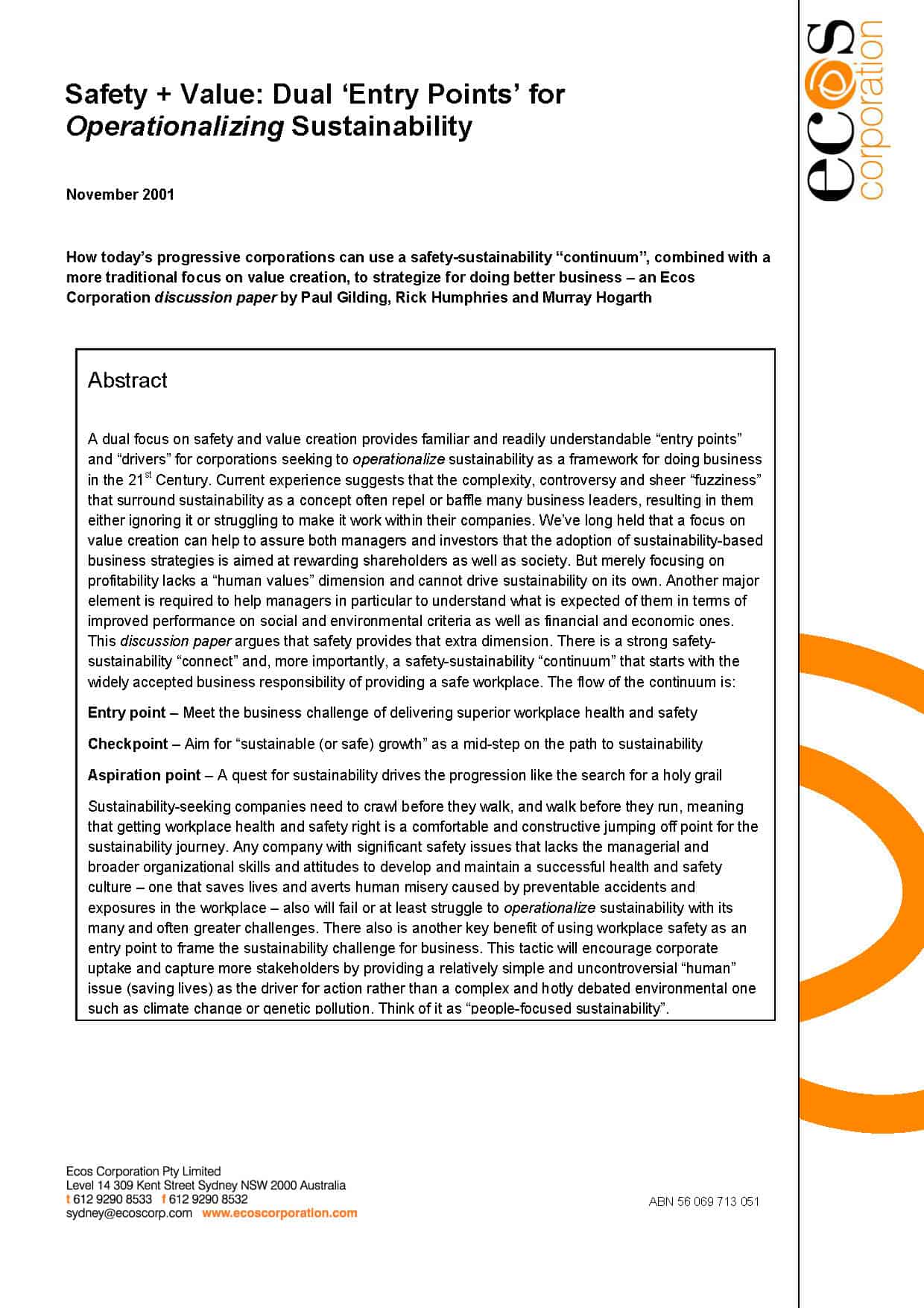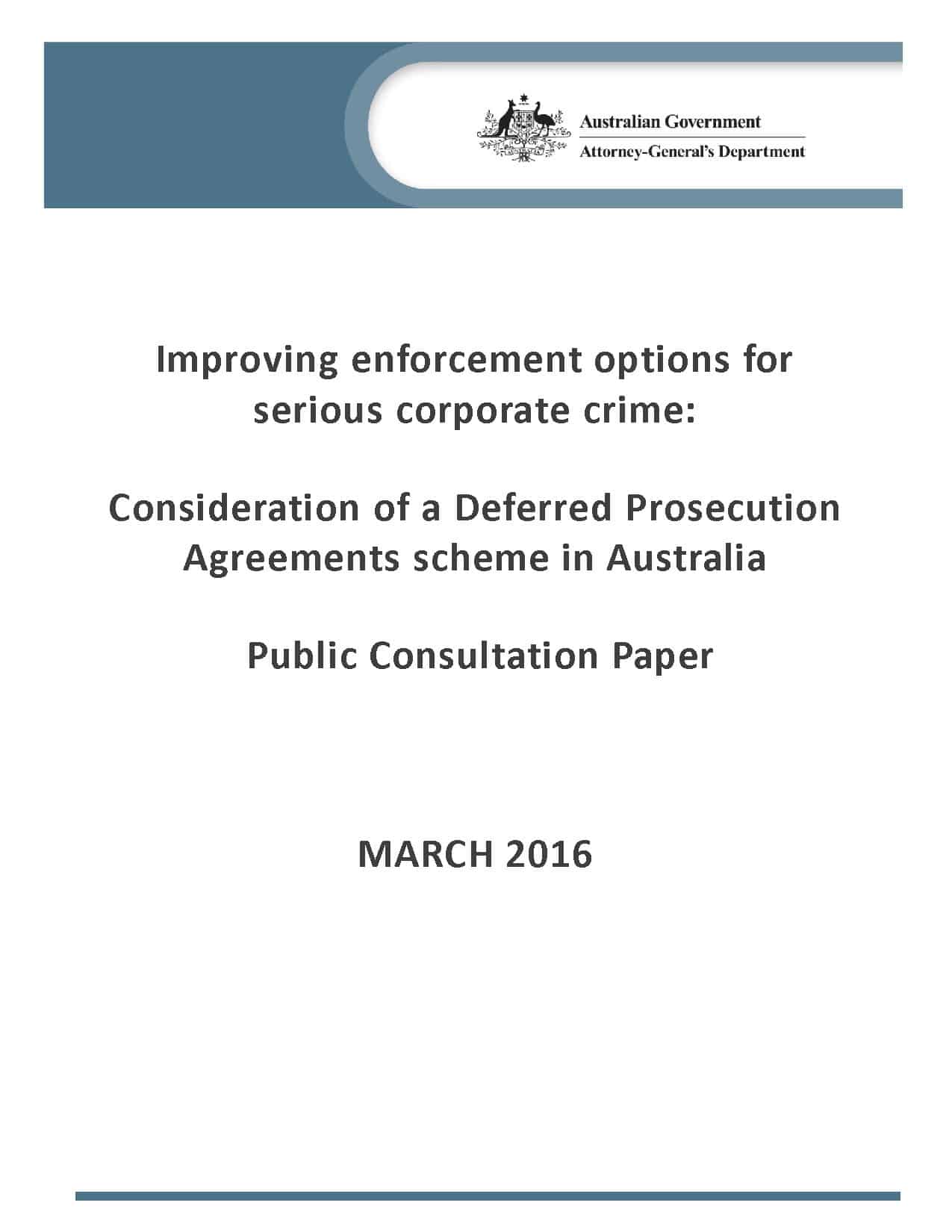 It has become fashionable to place occupational health and safety (OHS) in the organisational context of business sustainability. But this is not a new phenomenon in Australia. In 2001 the Ecos Corporation published a discussion paper called “Safety + Value: Entry Points for Operationalizing Sustainability.”* It states
It has become fashionable to place occupational health and safety (OHS) in the organisational context of business sustainability. But this is not a new phenomenon in Australia. In 2001 the Ecos Corporation published a discussion paper called “Safety + Value: Entry Points for Operationalizing Sustainability.”* It states
“A dual focus on safety and value creation provides familiar and readily understandable “entry points” and “drivers” for corporations seeking to operationalize sustainability as a framework for doing business in the 21st Century.”





 The 2016
The 2016